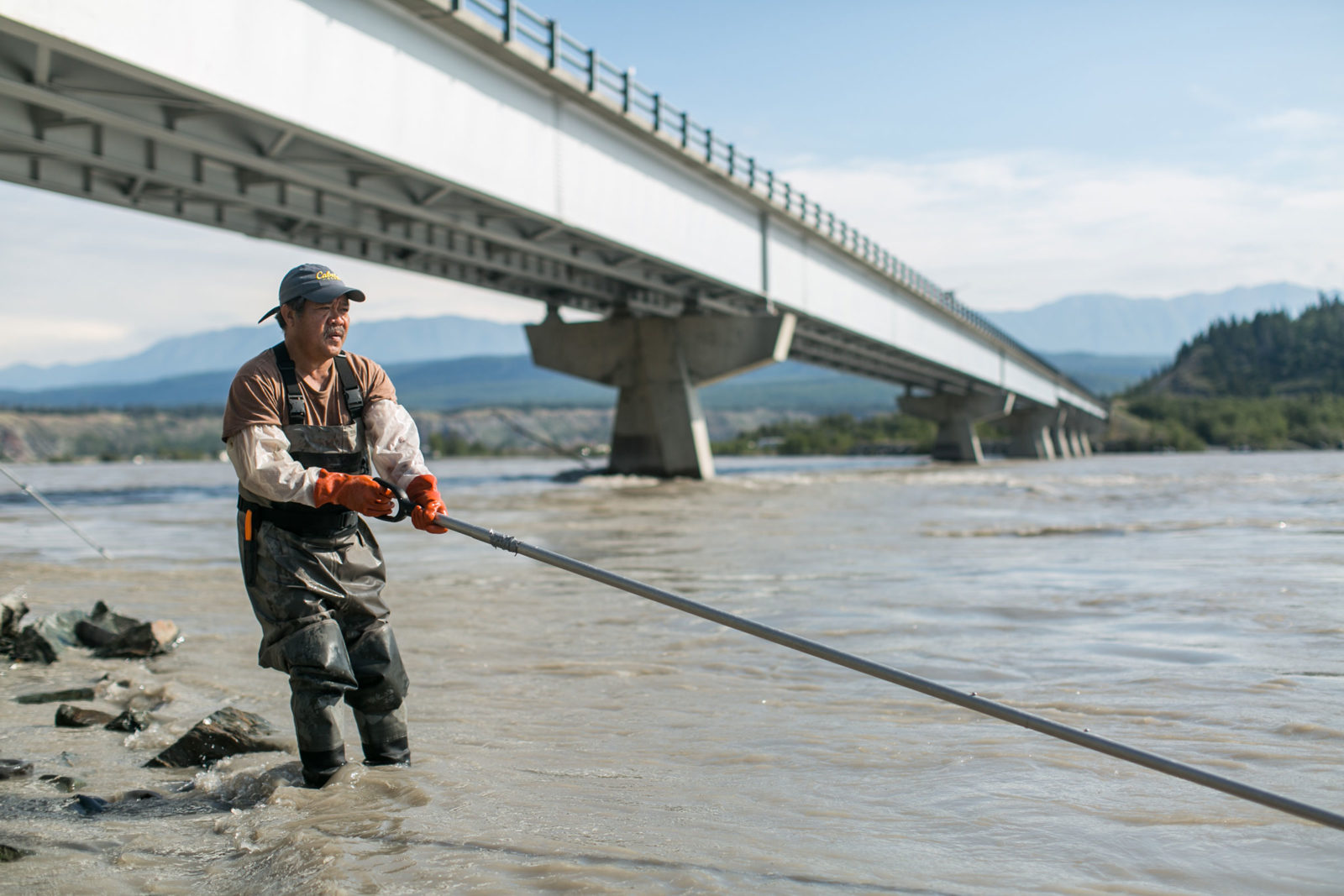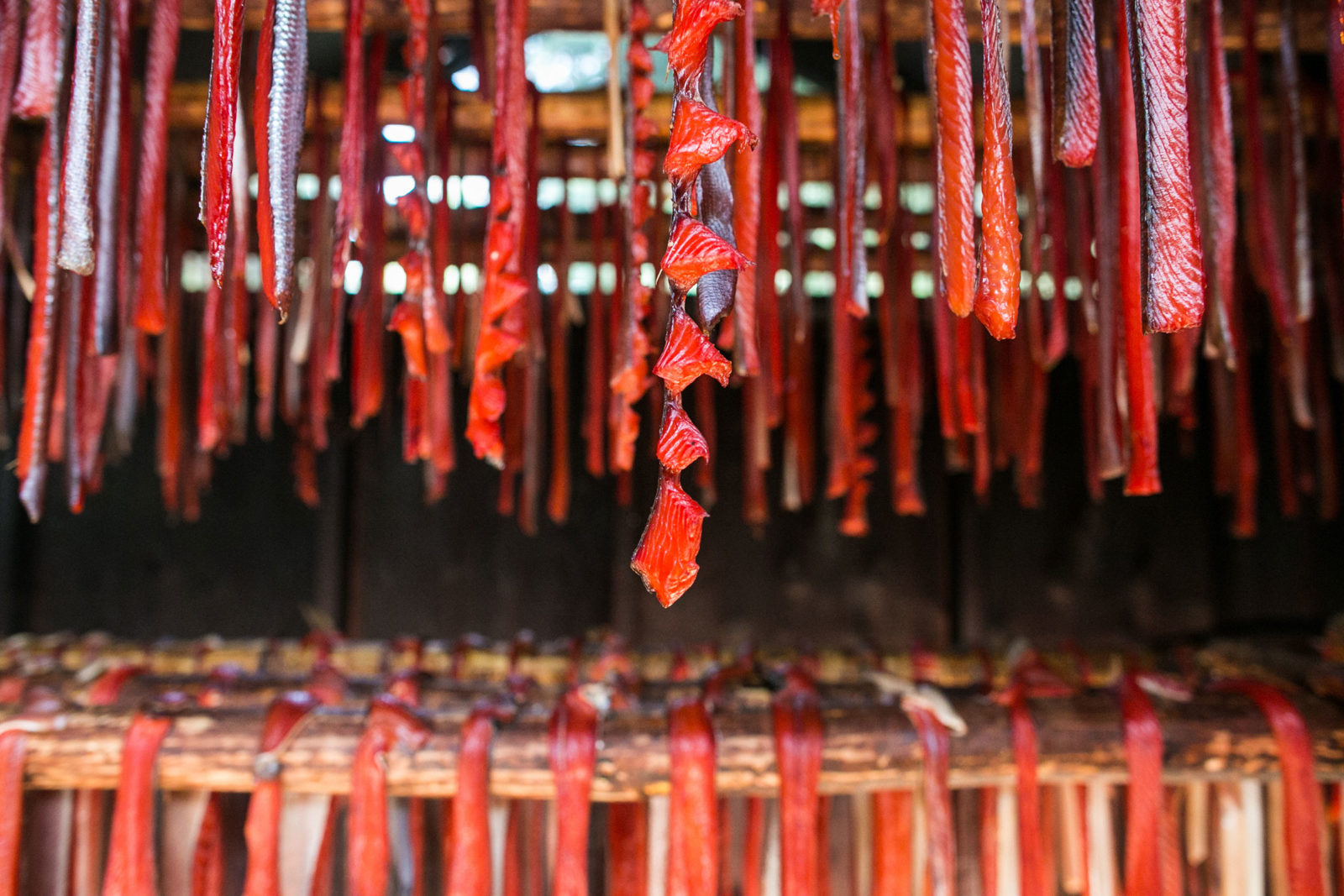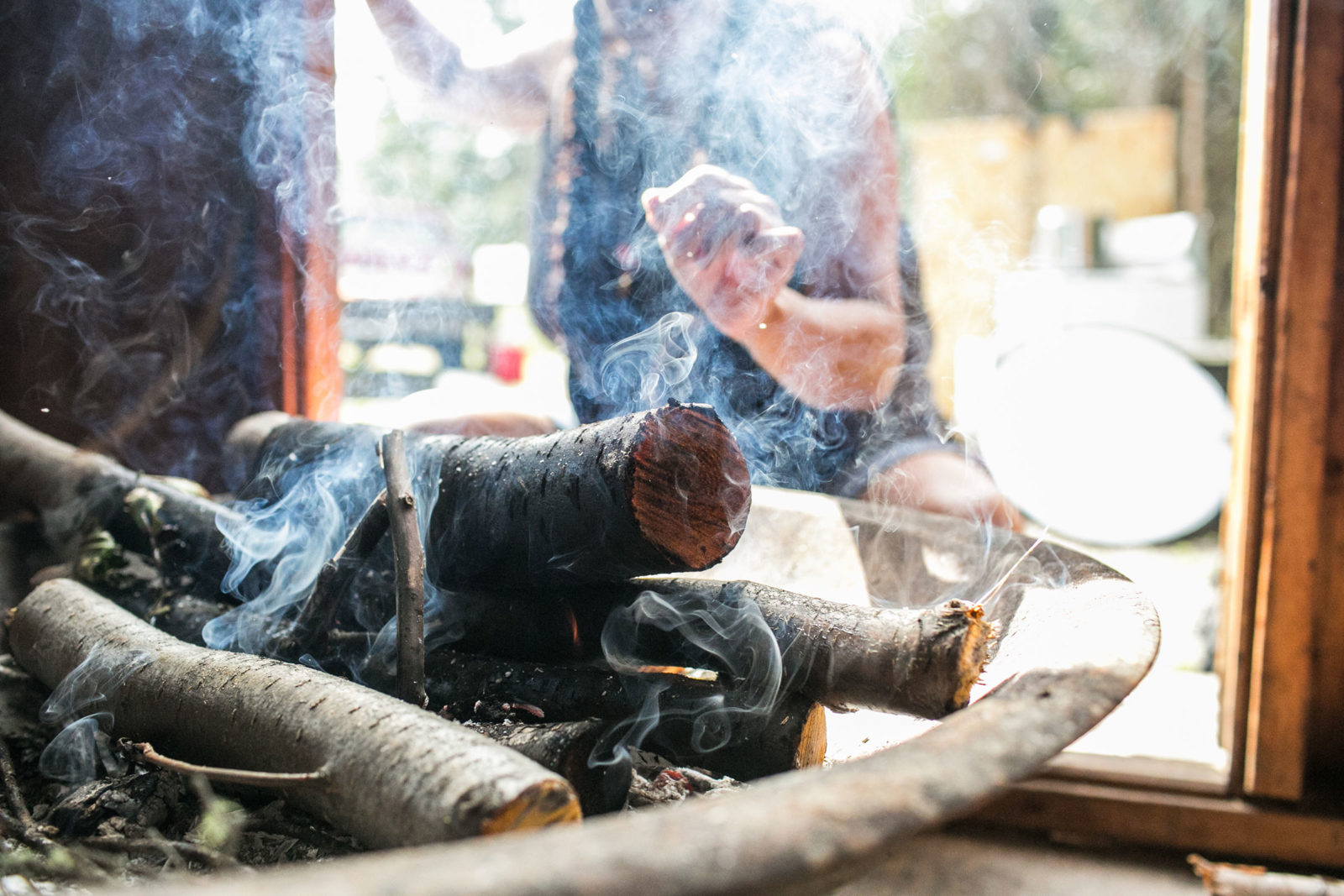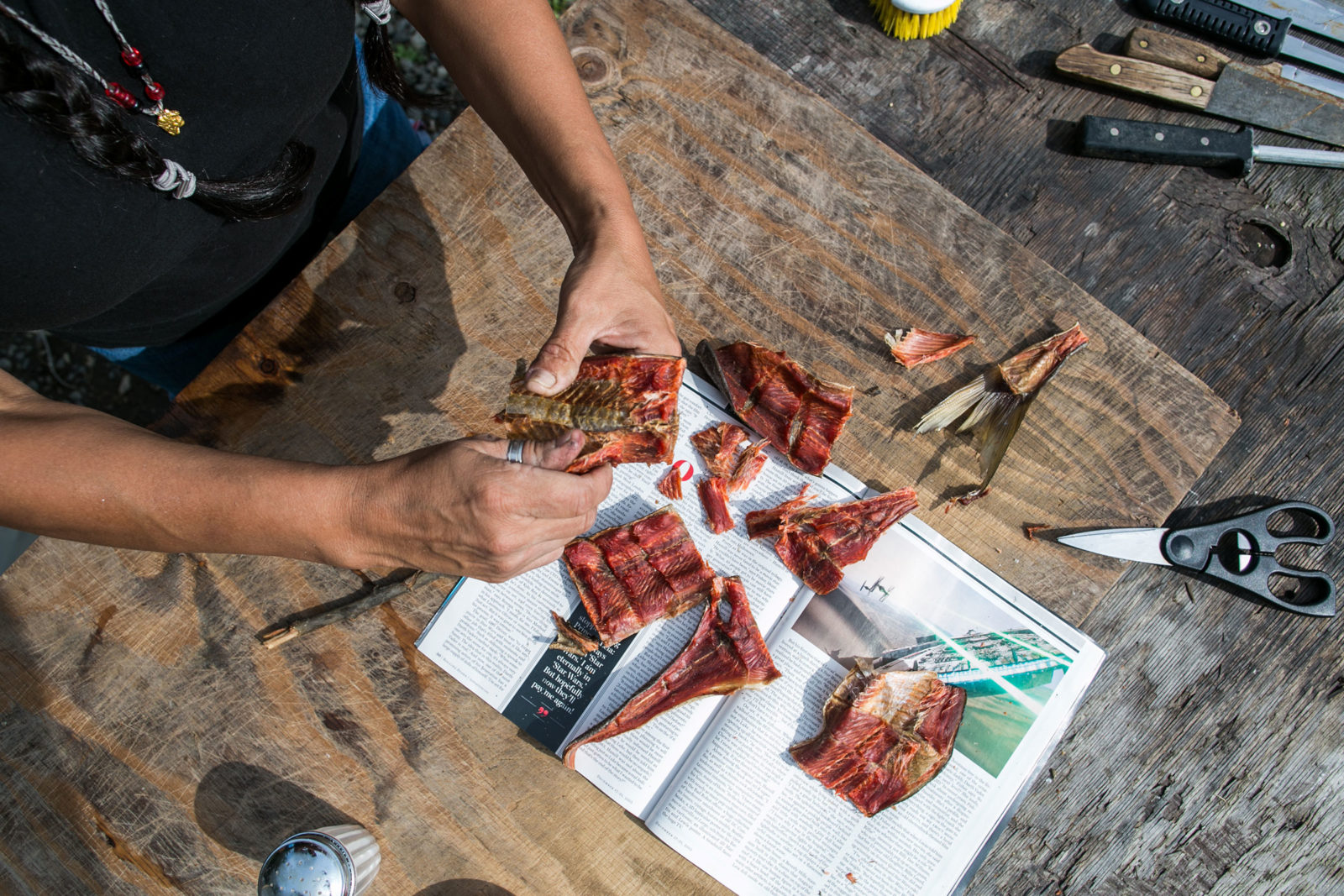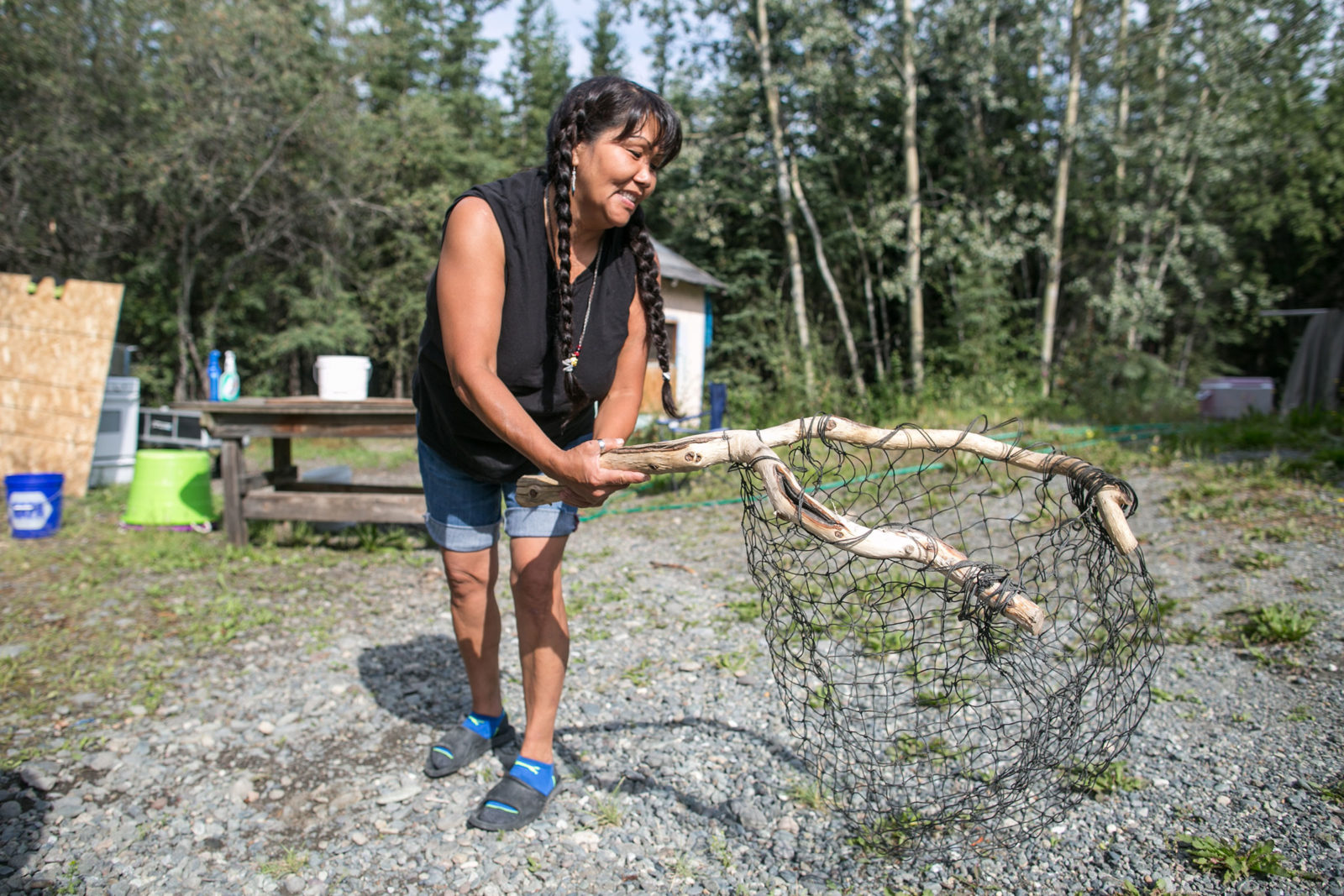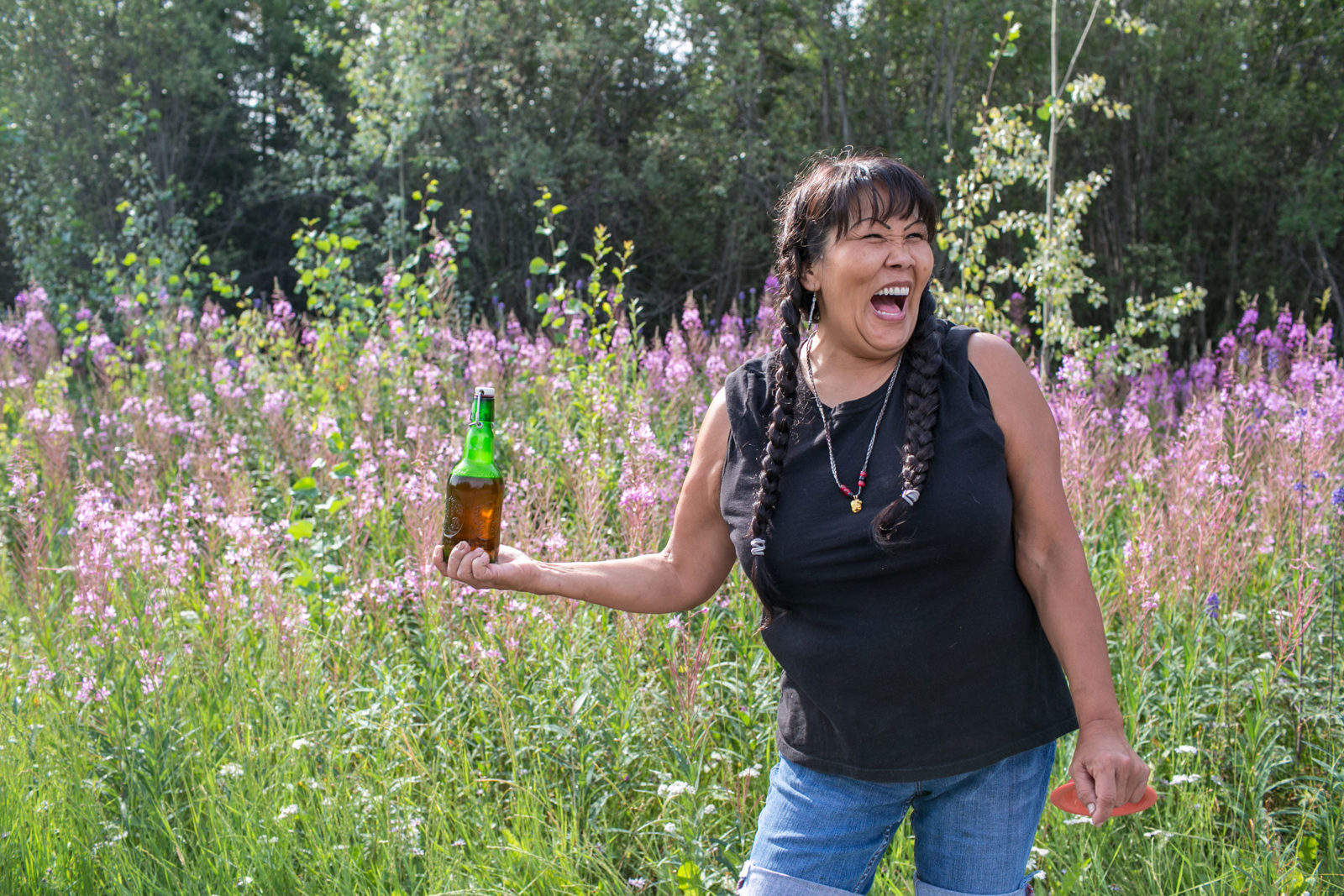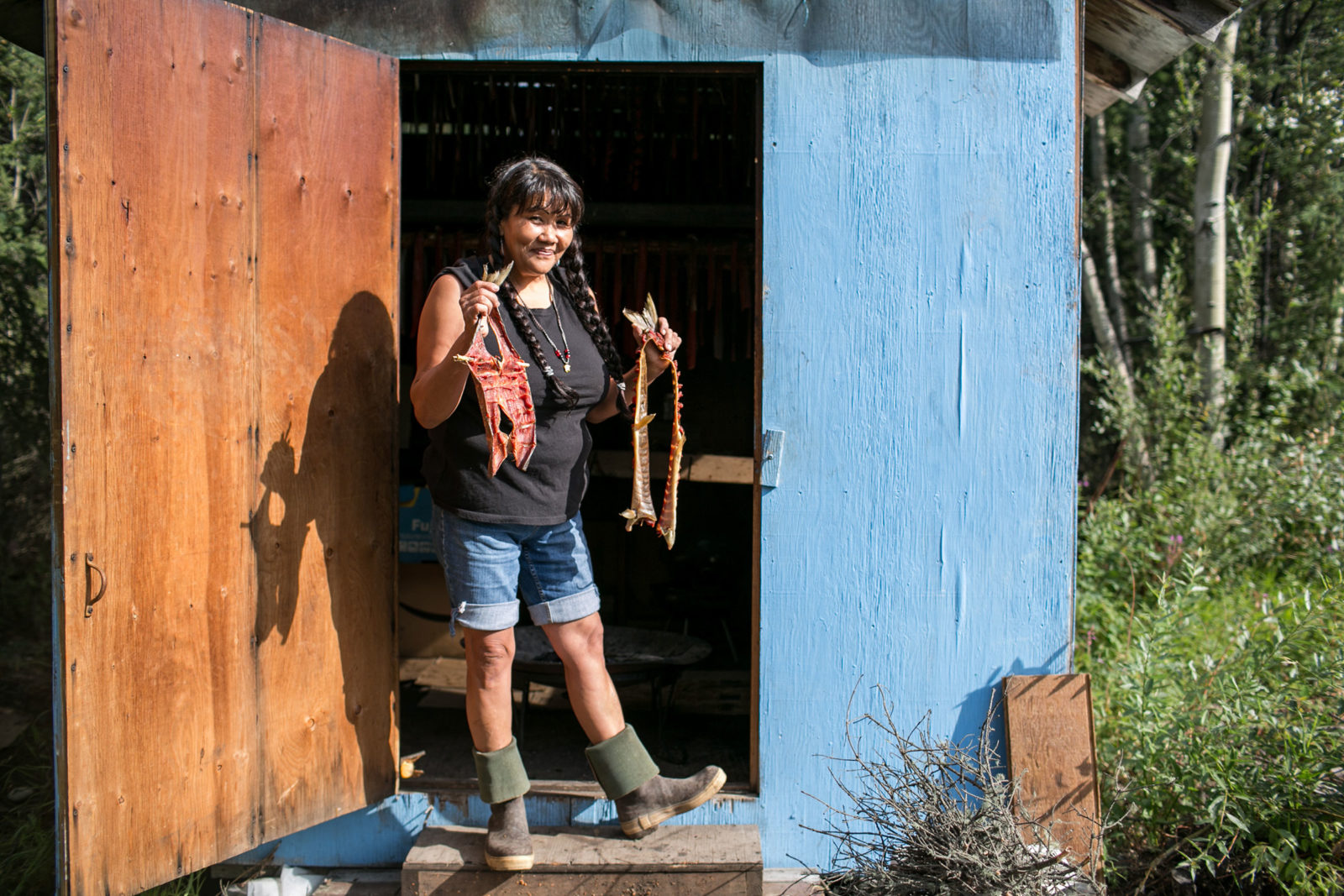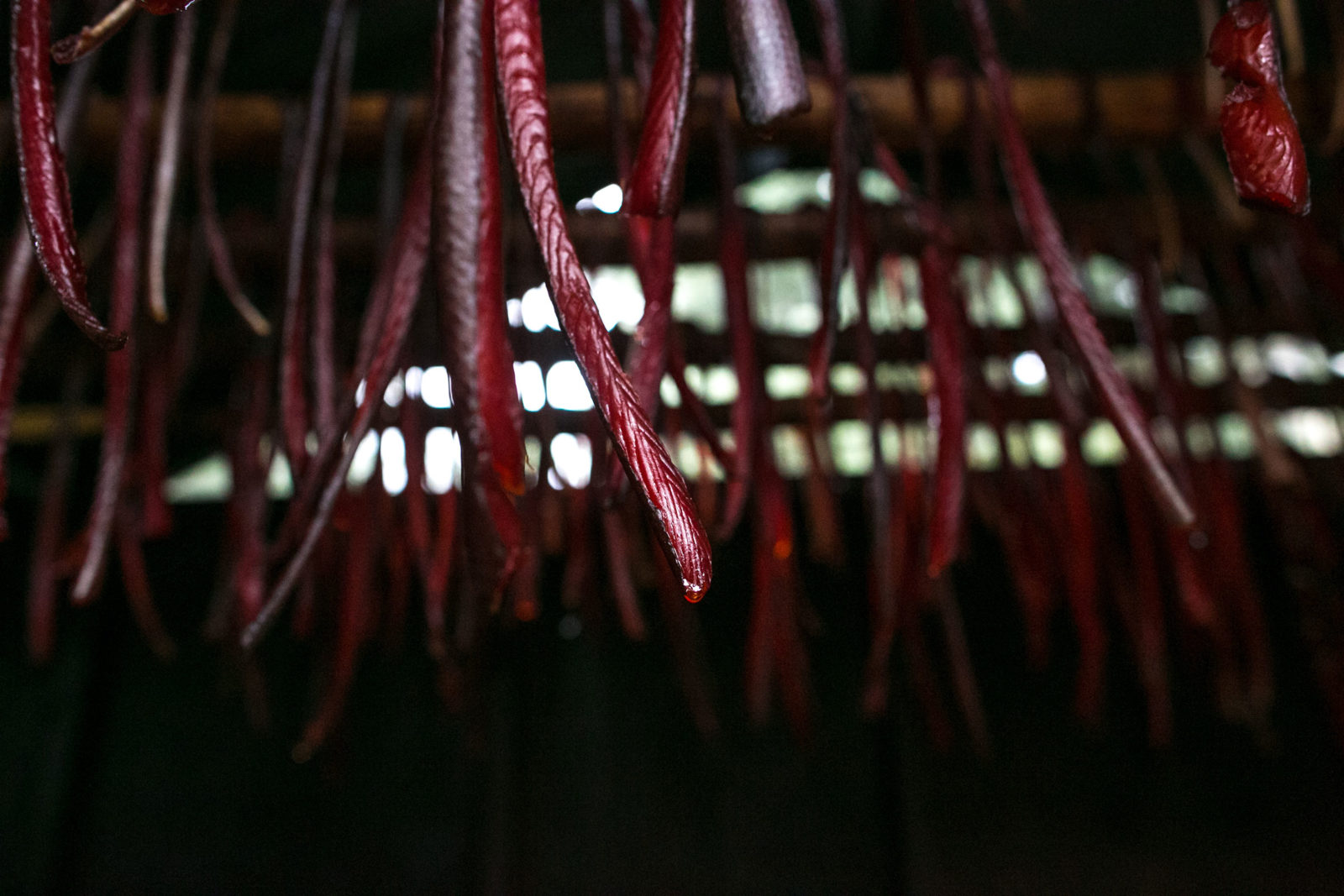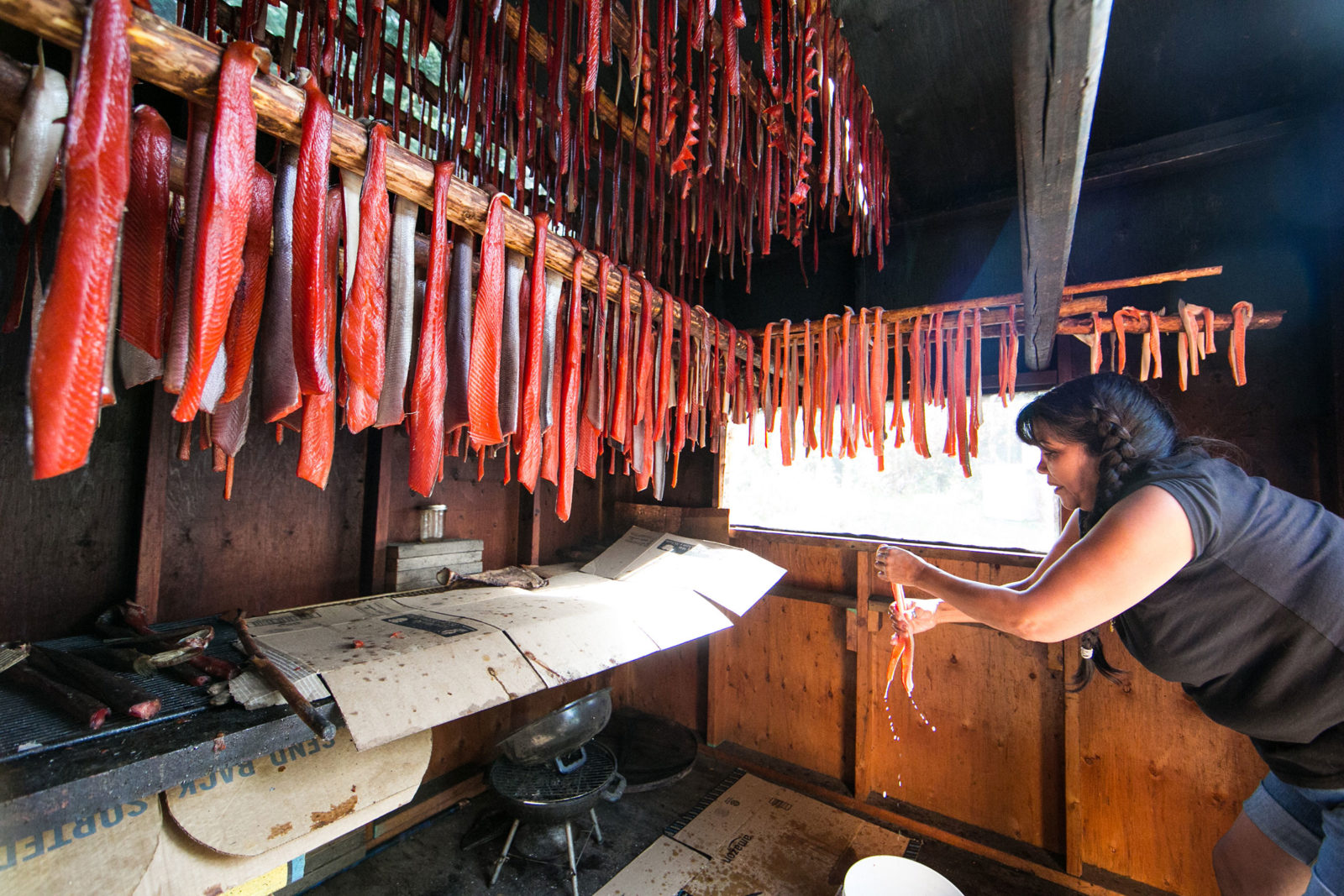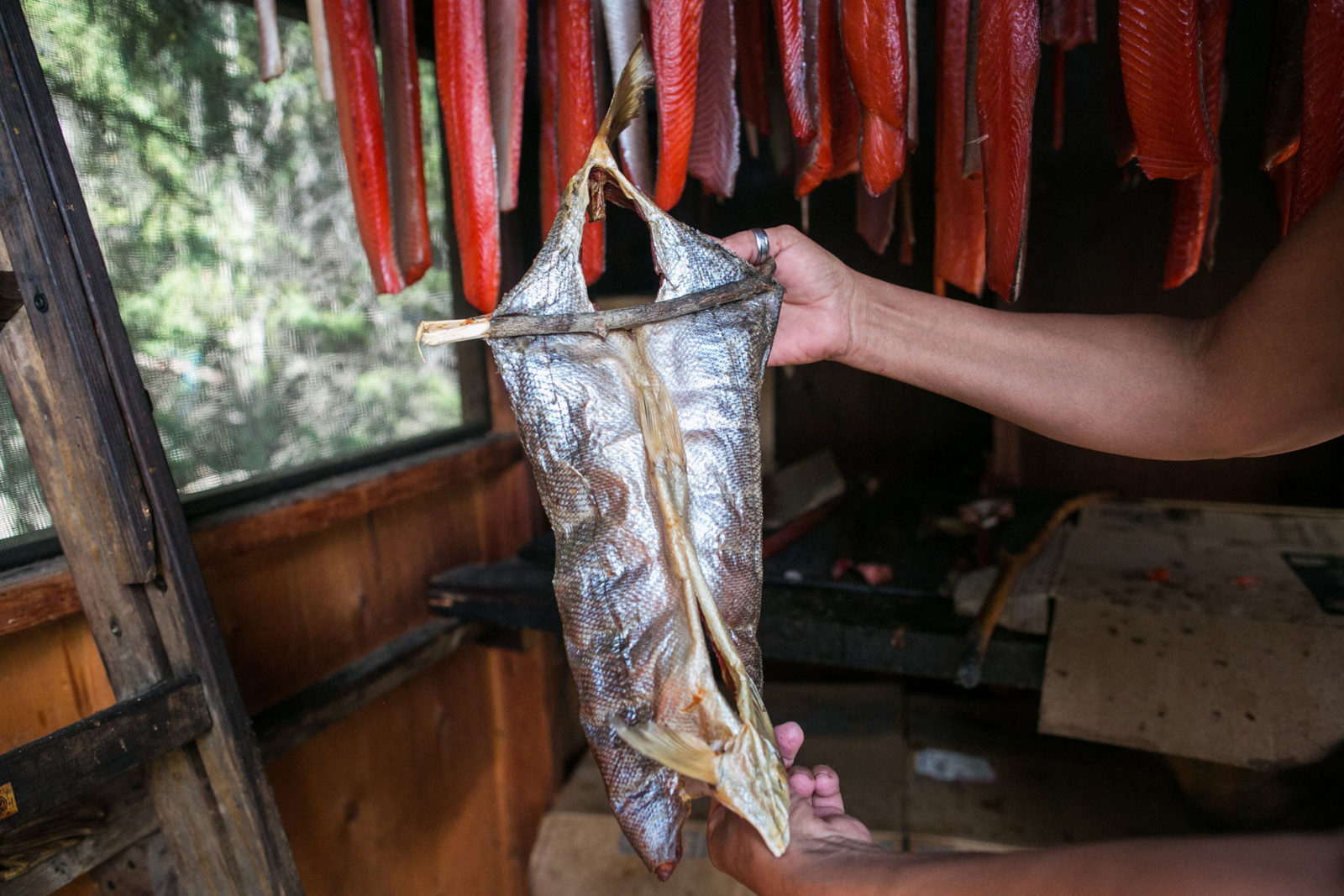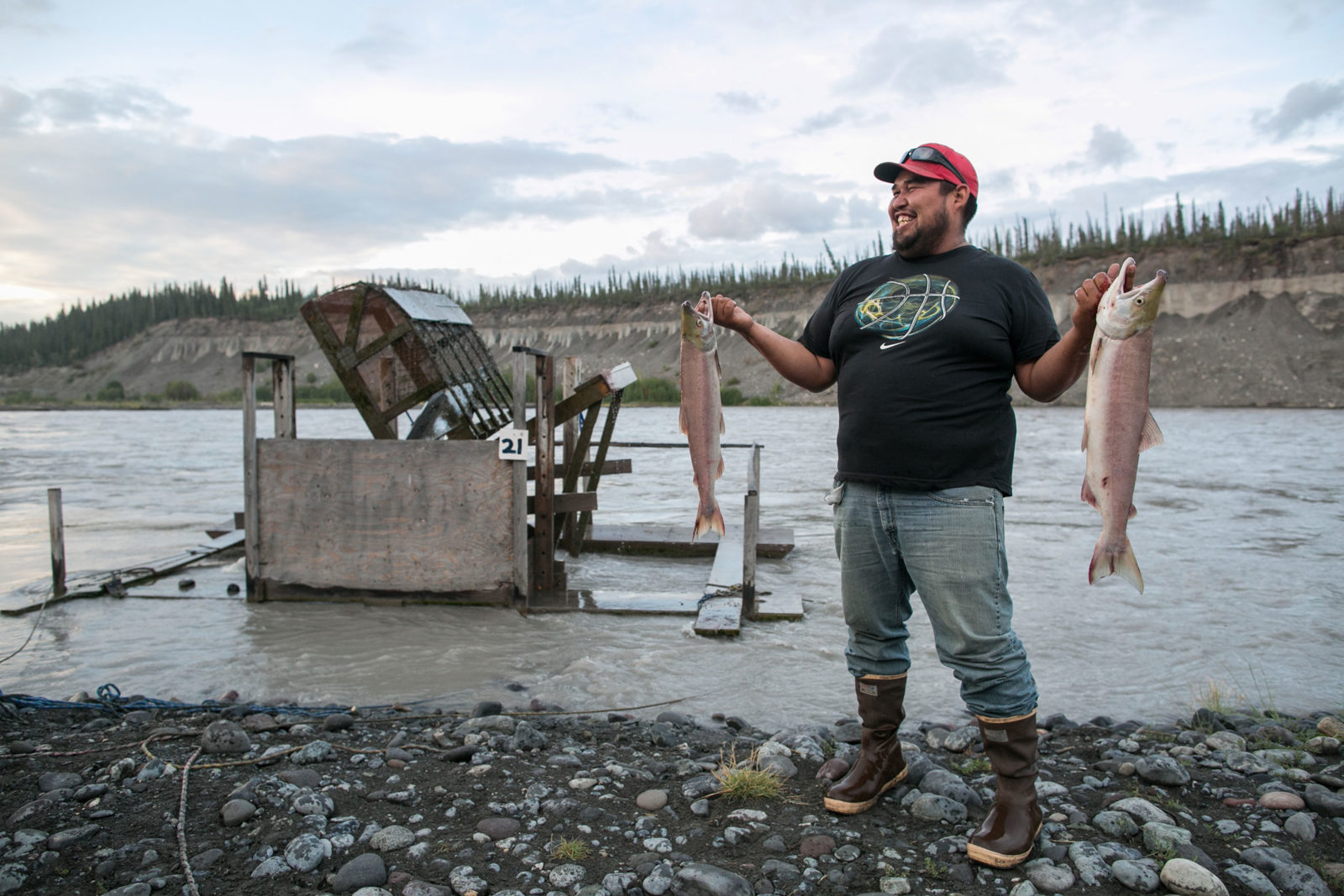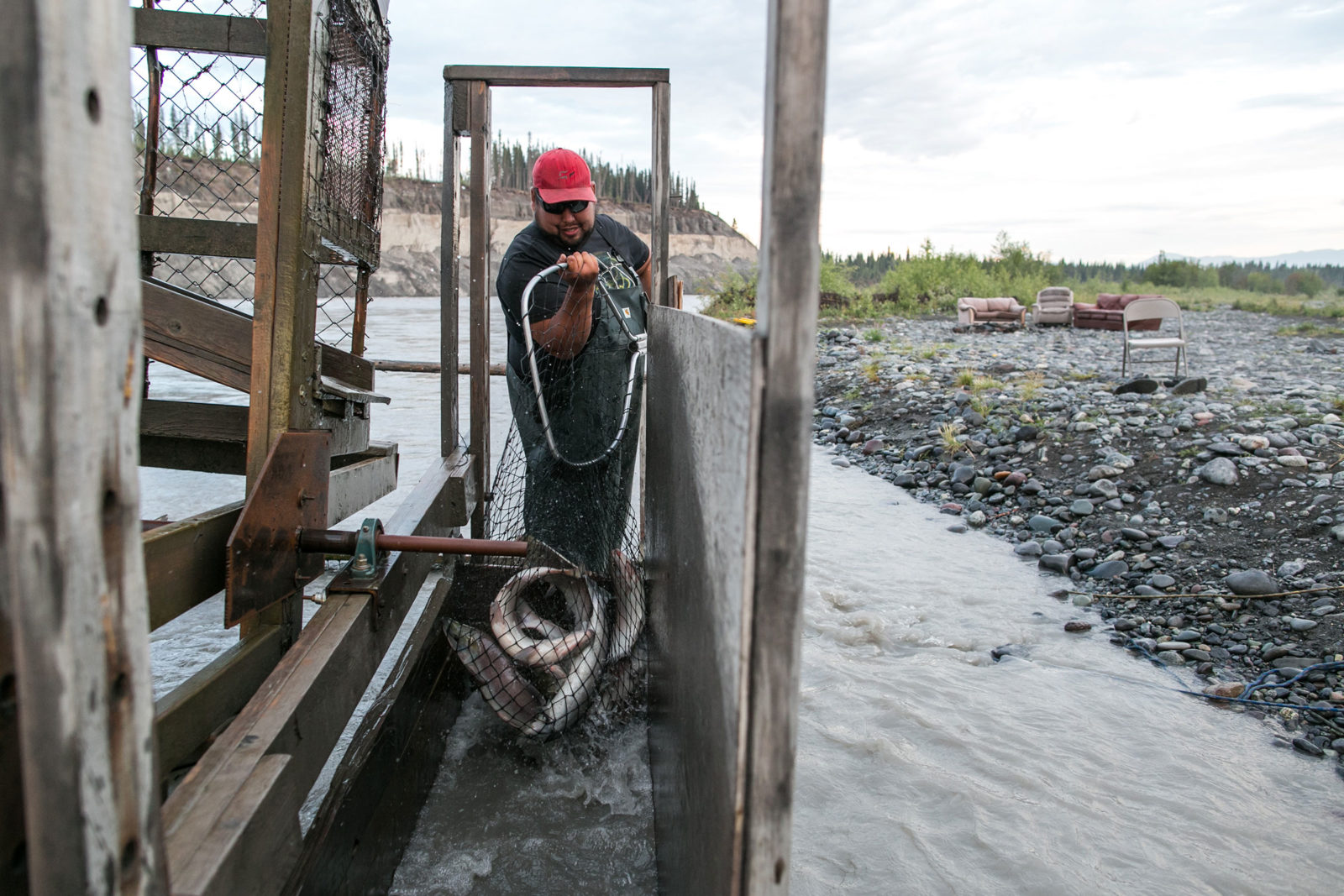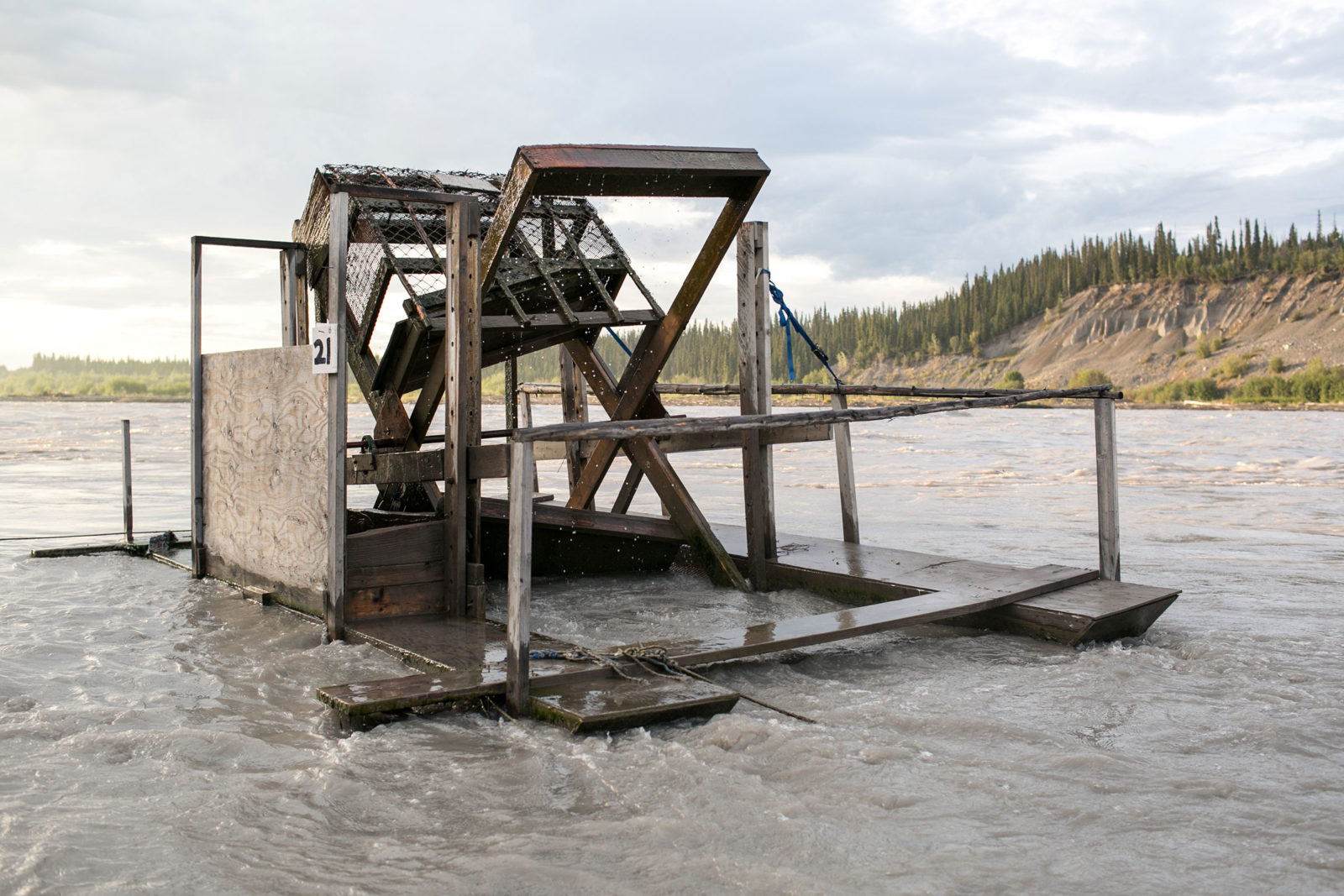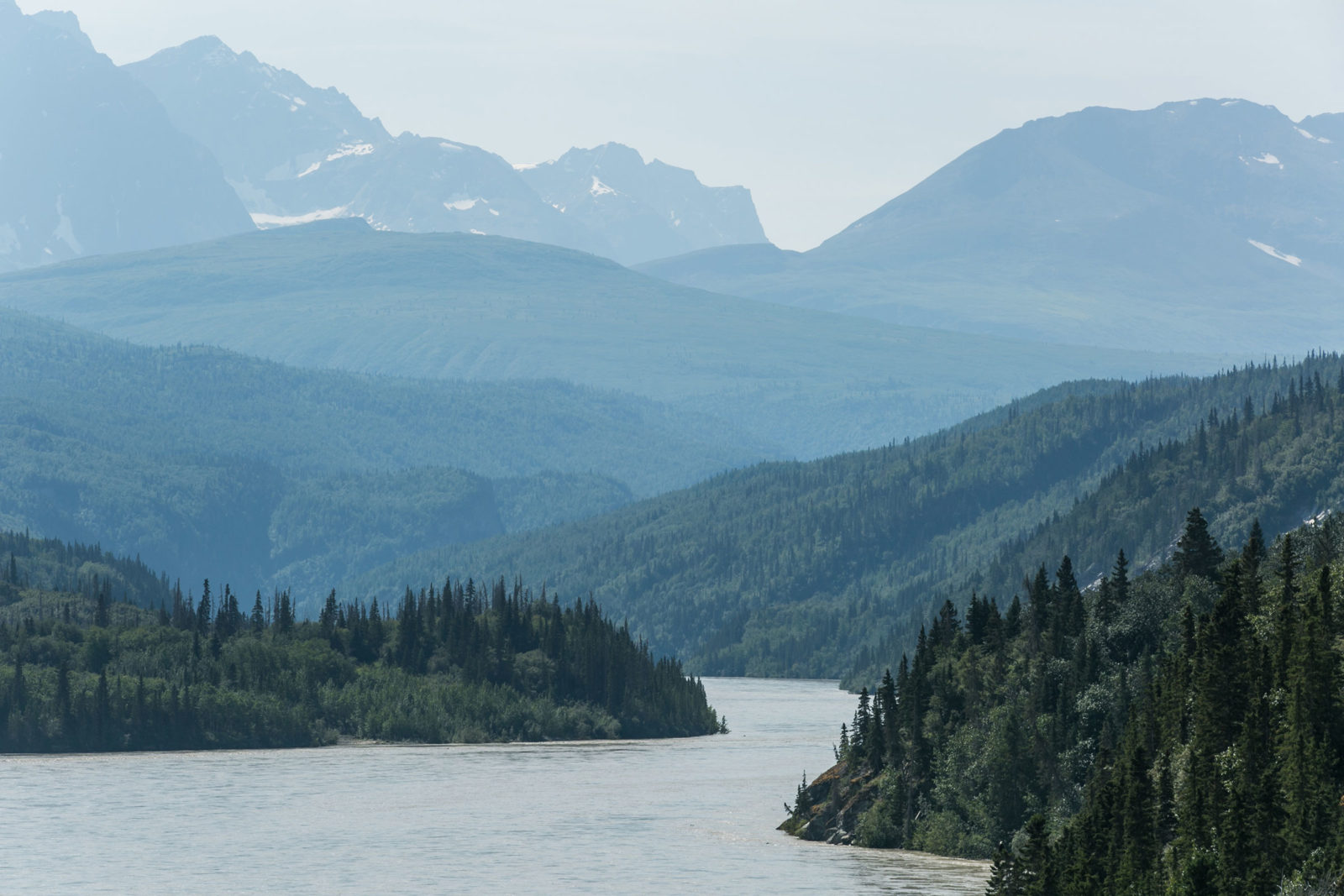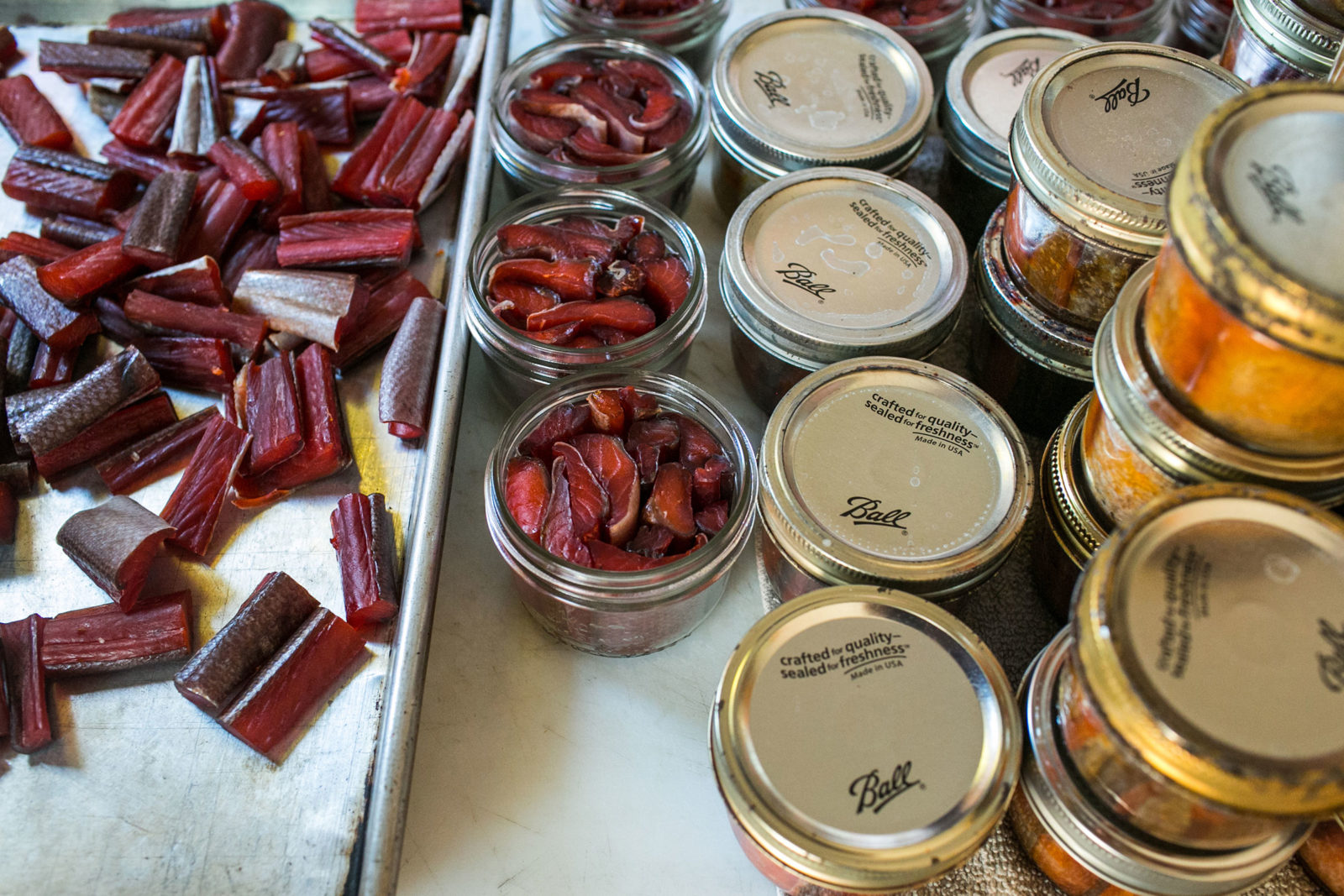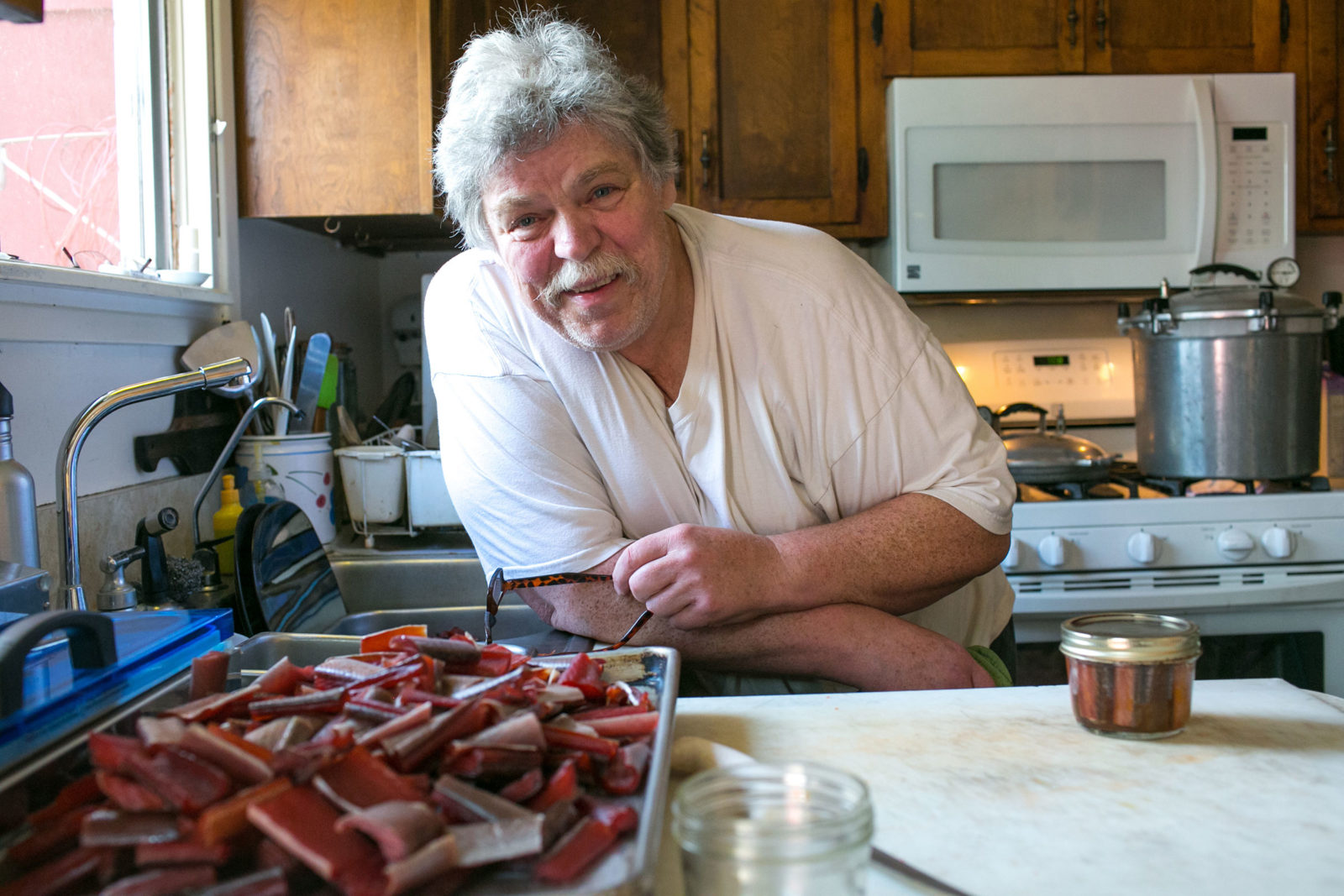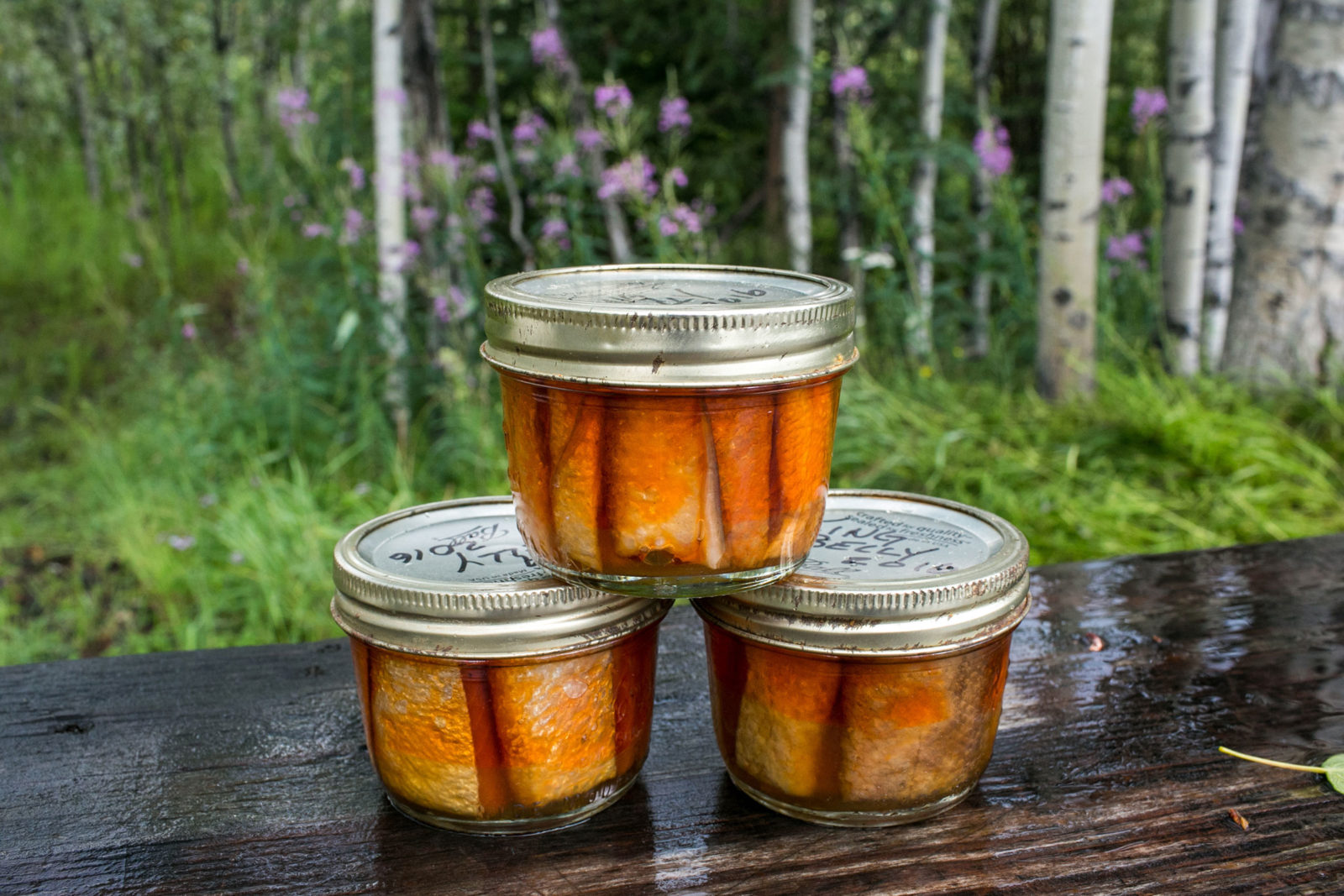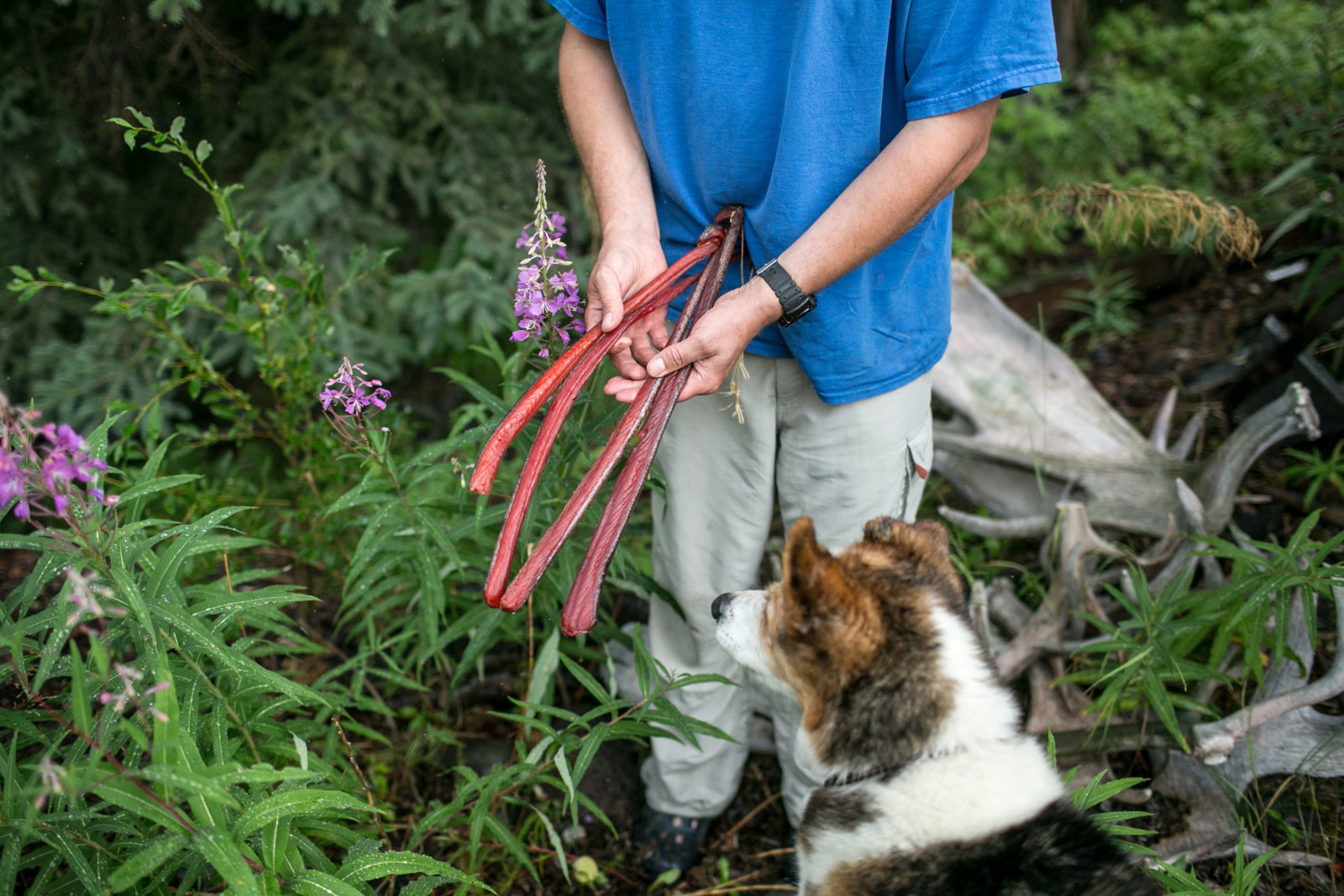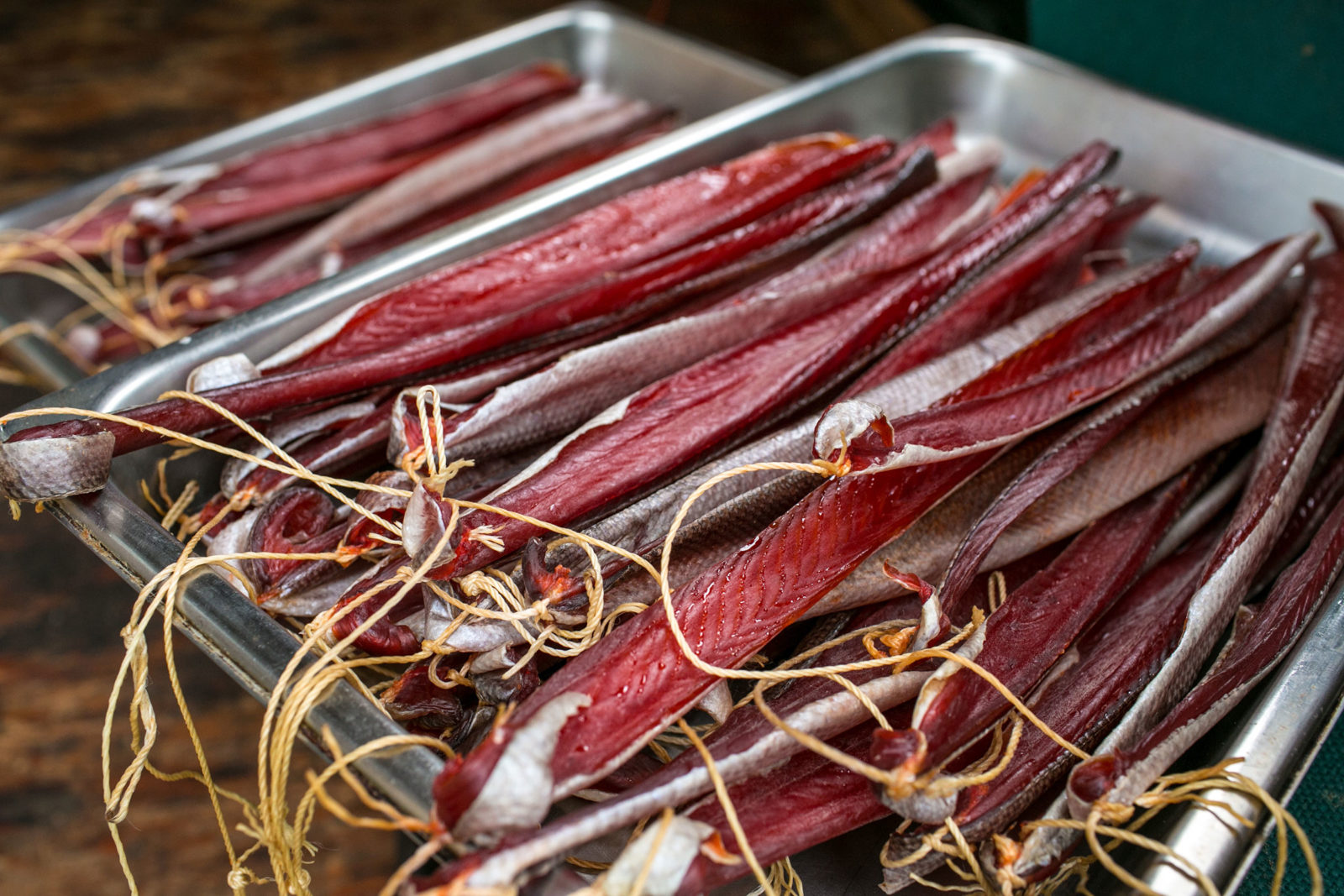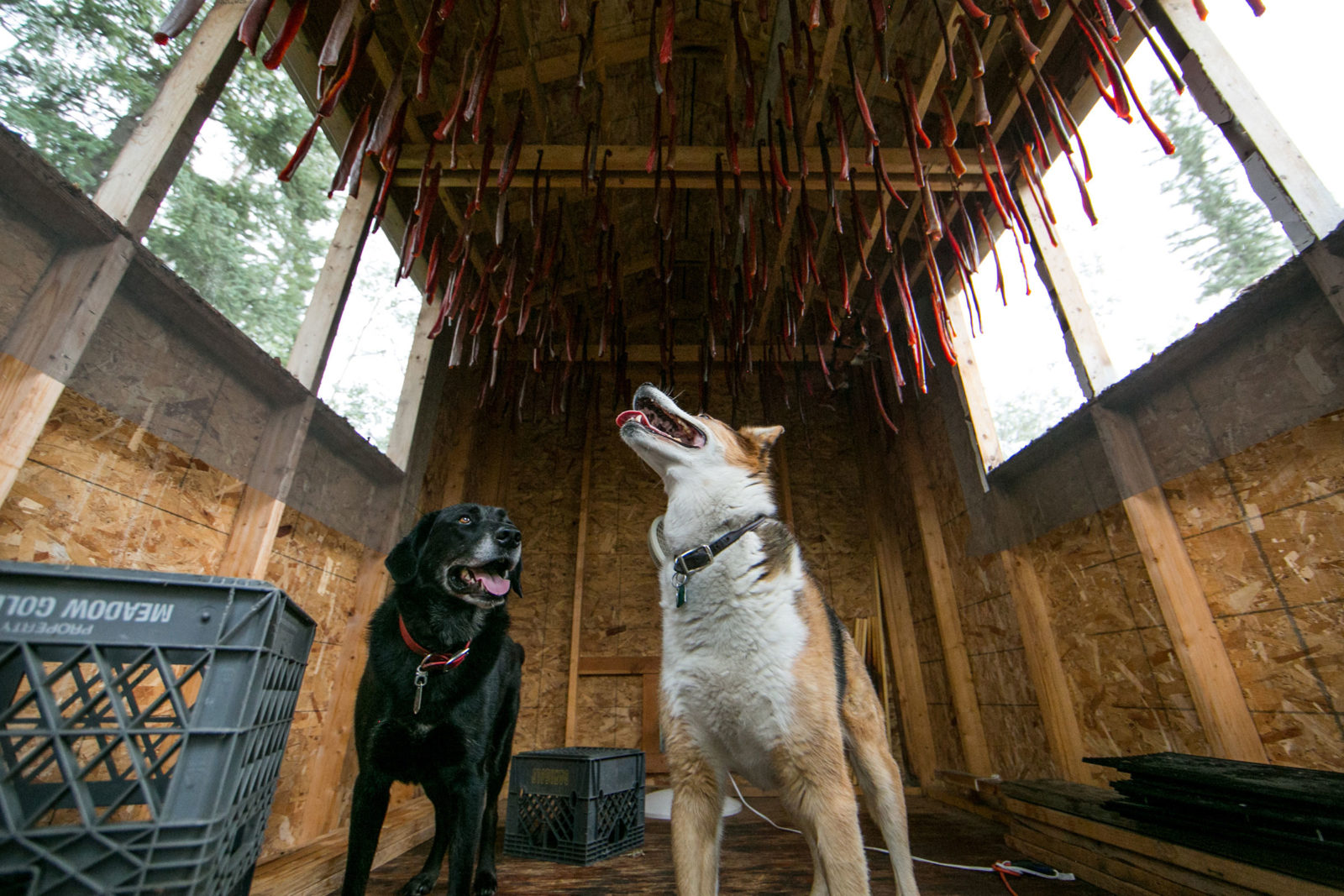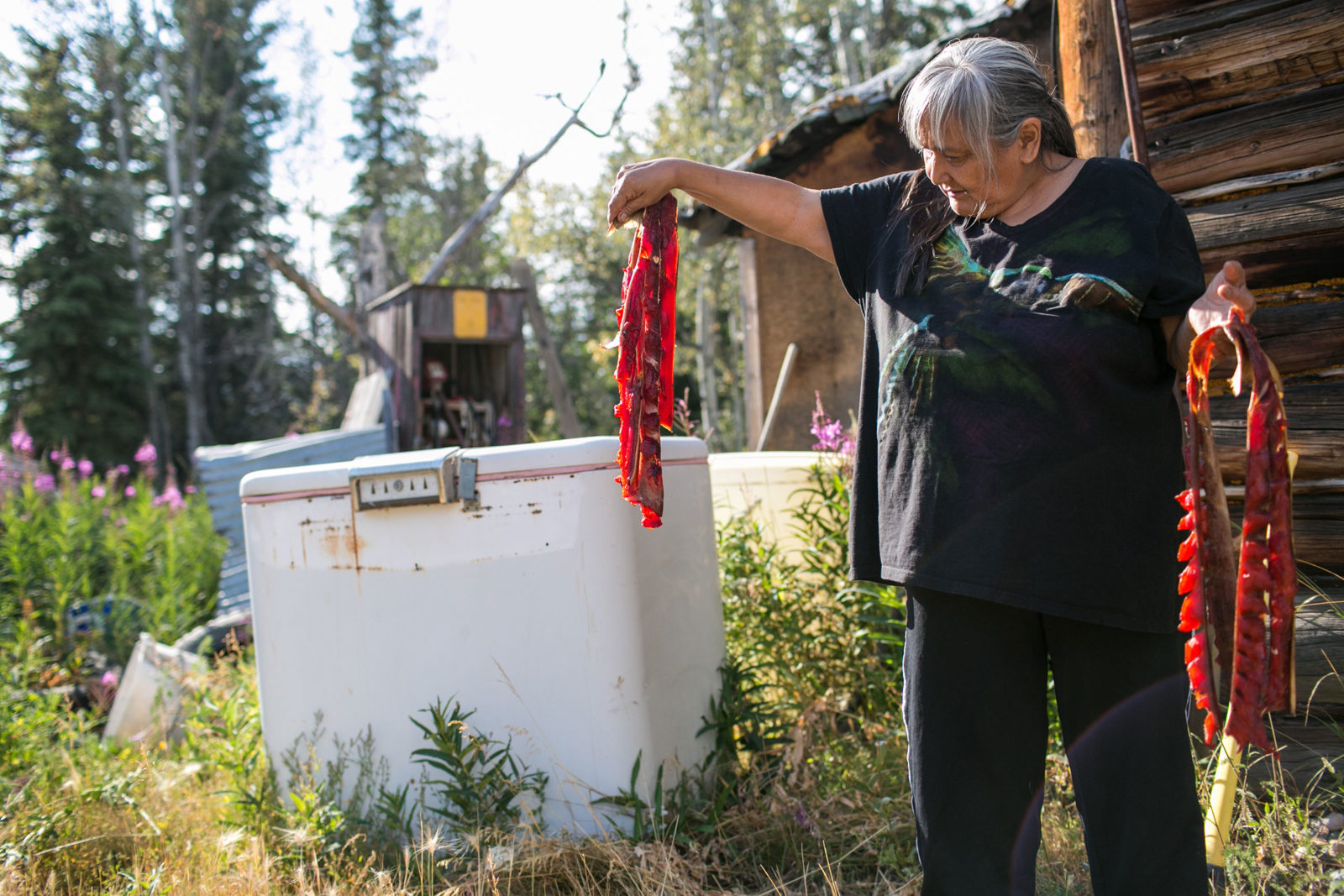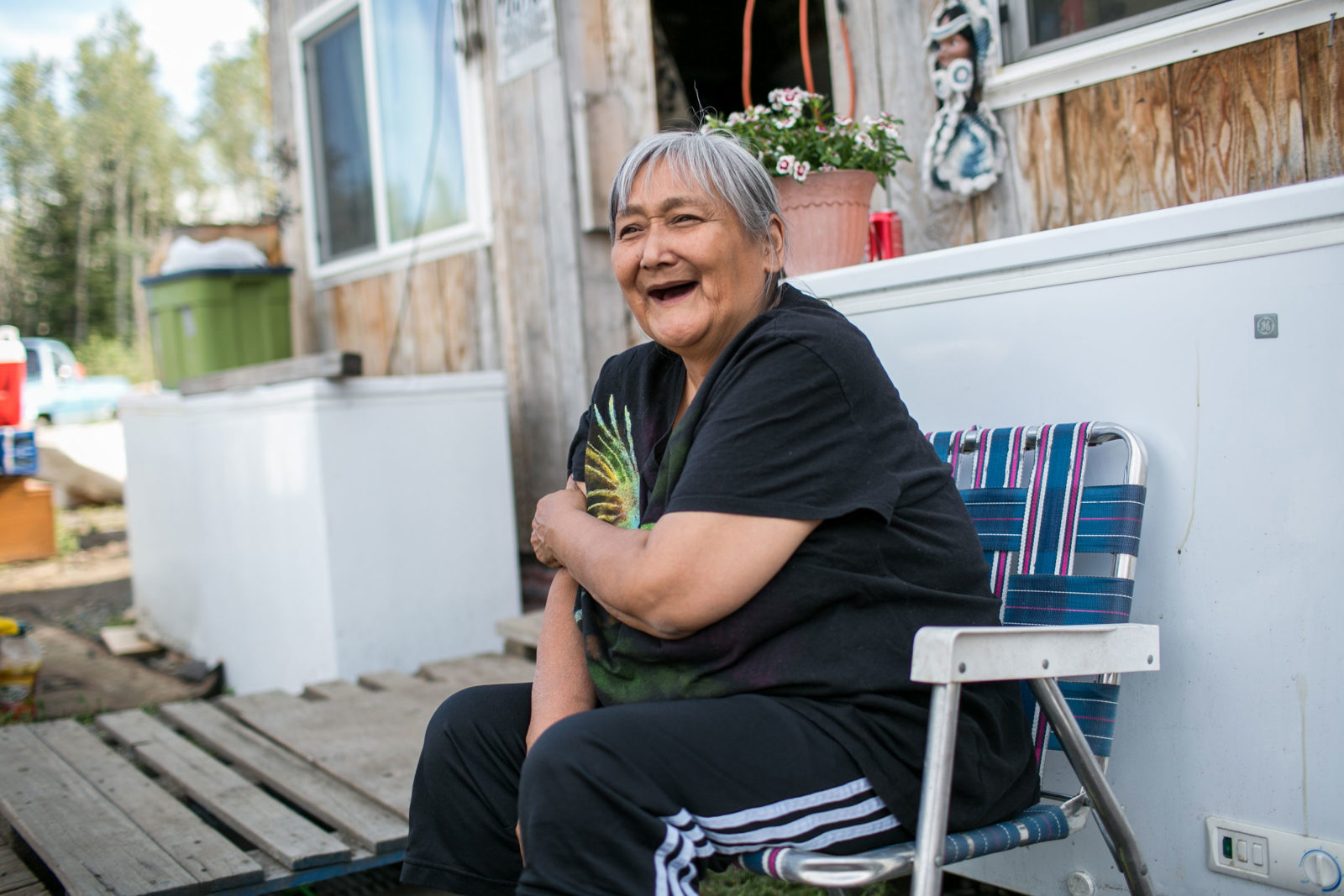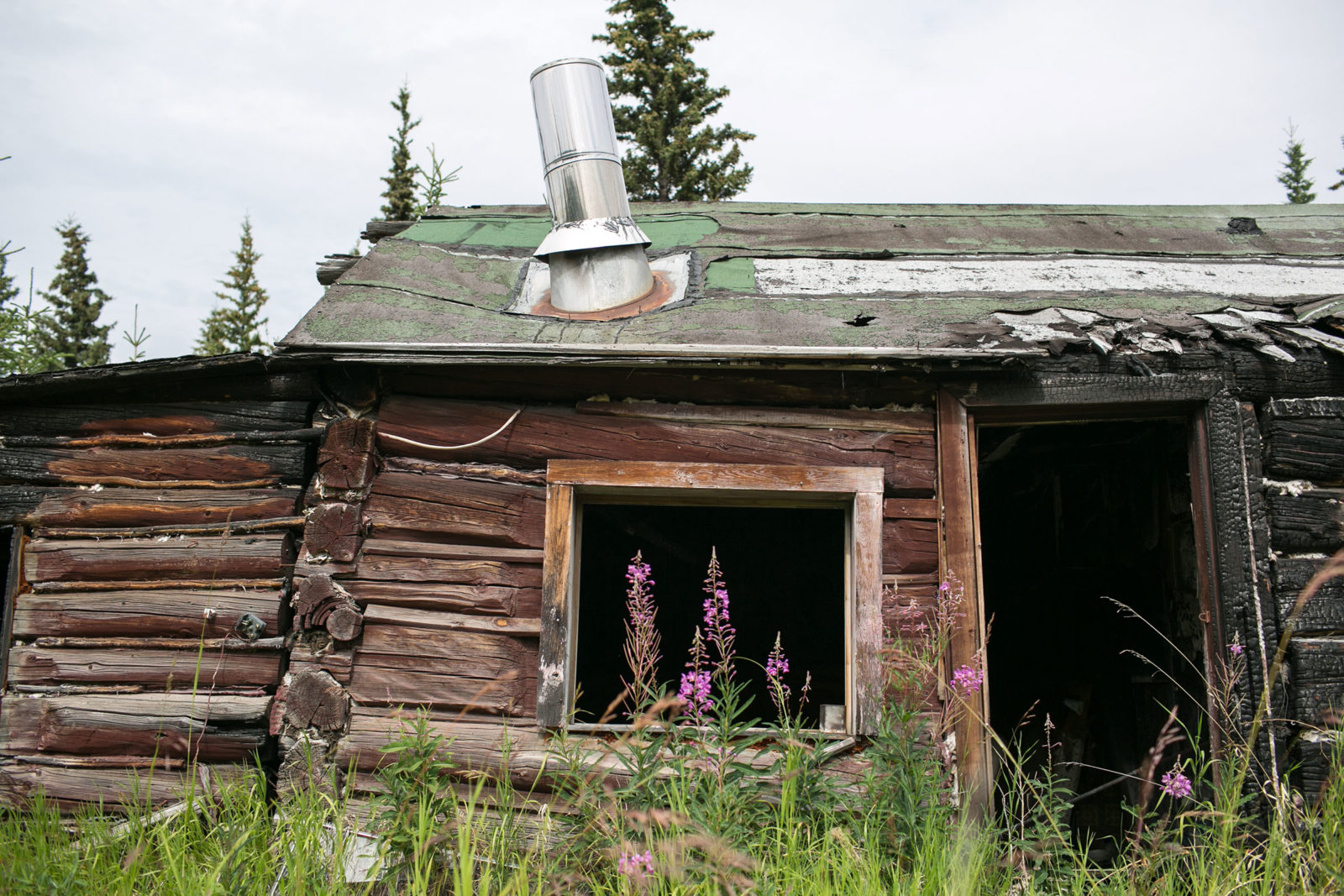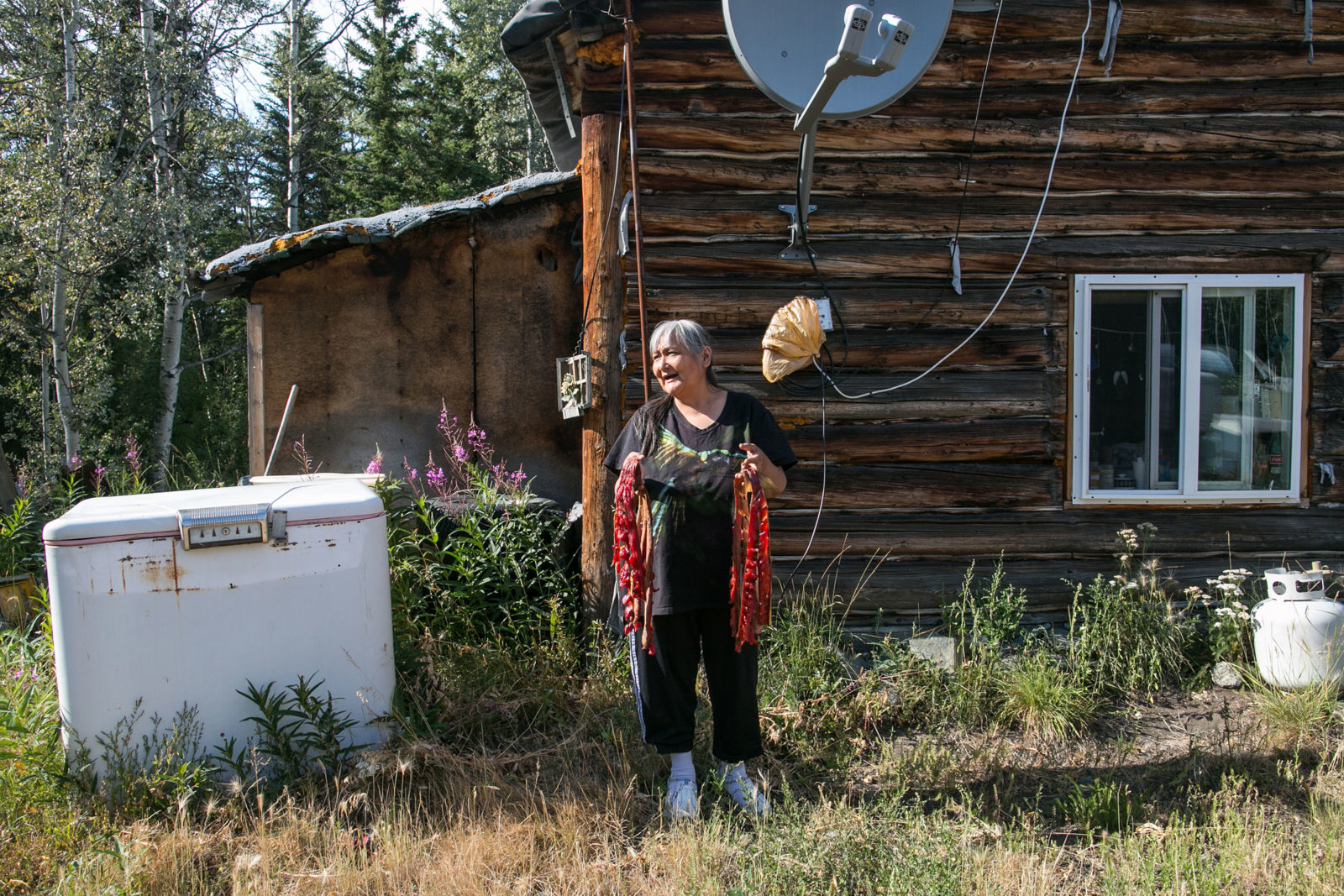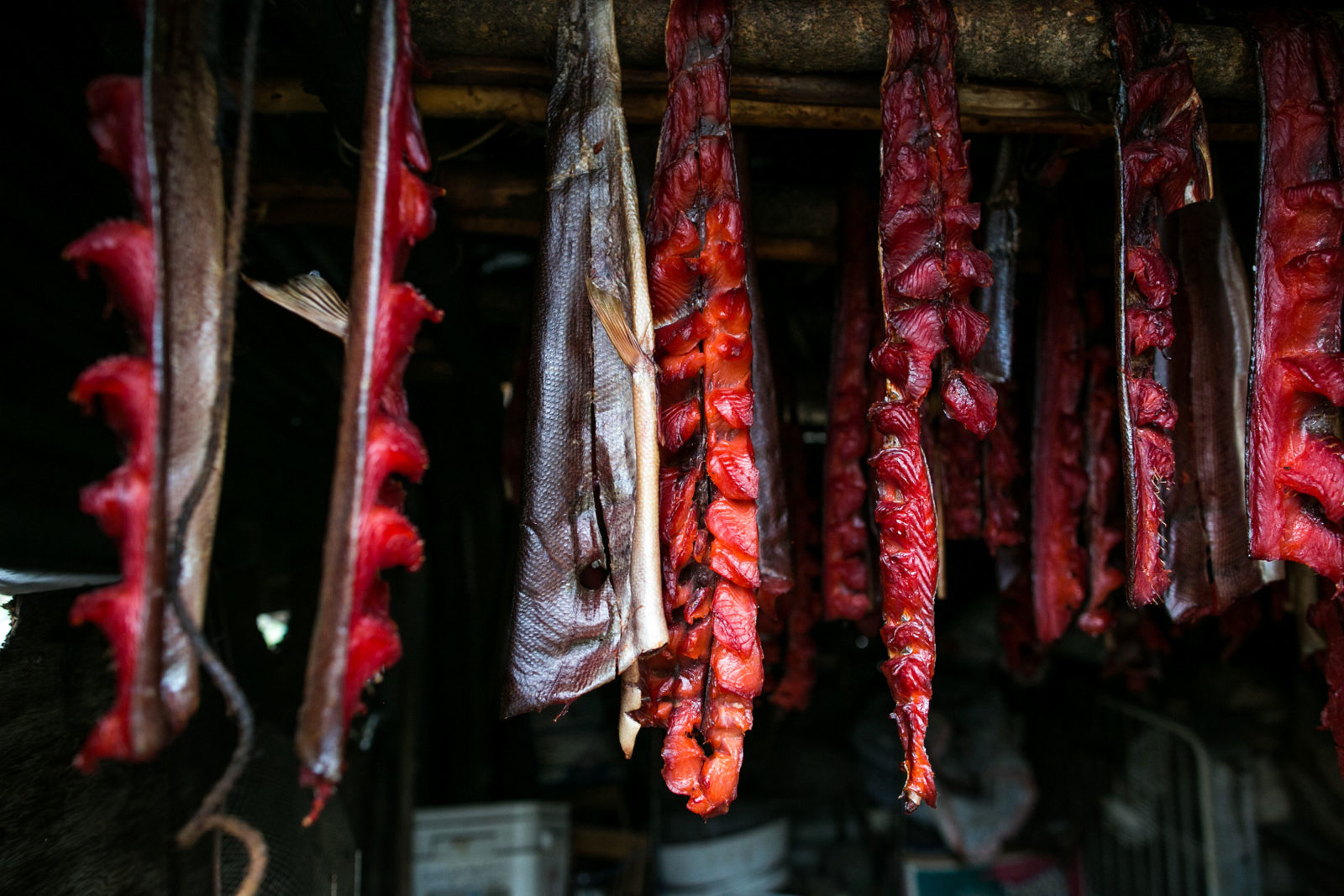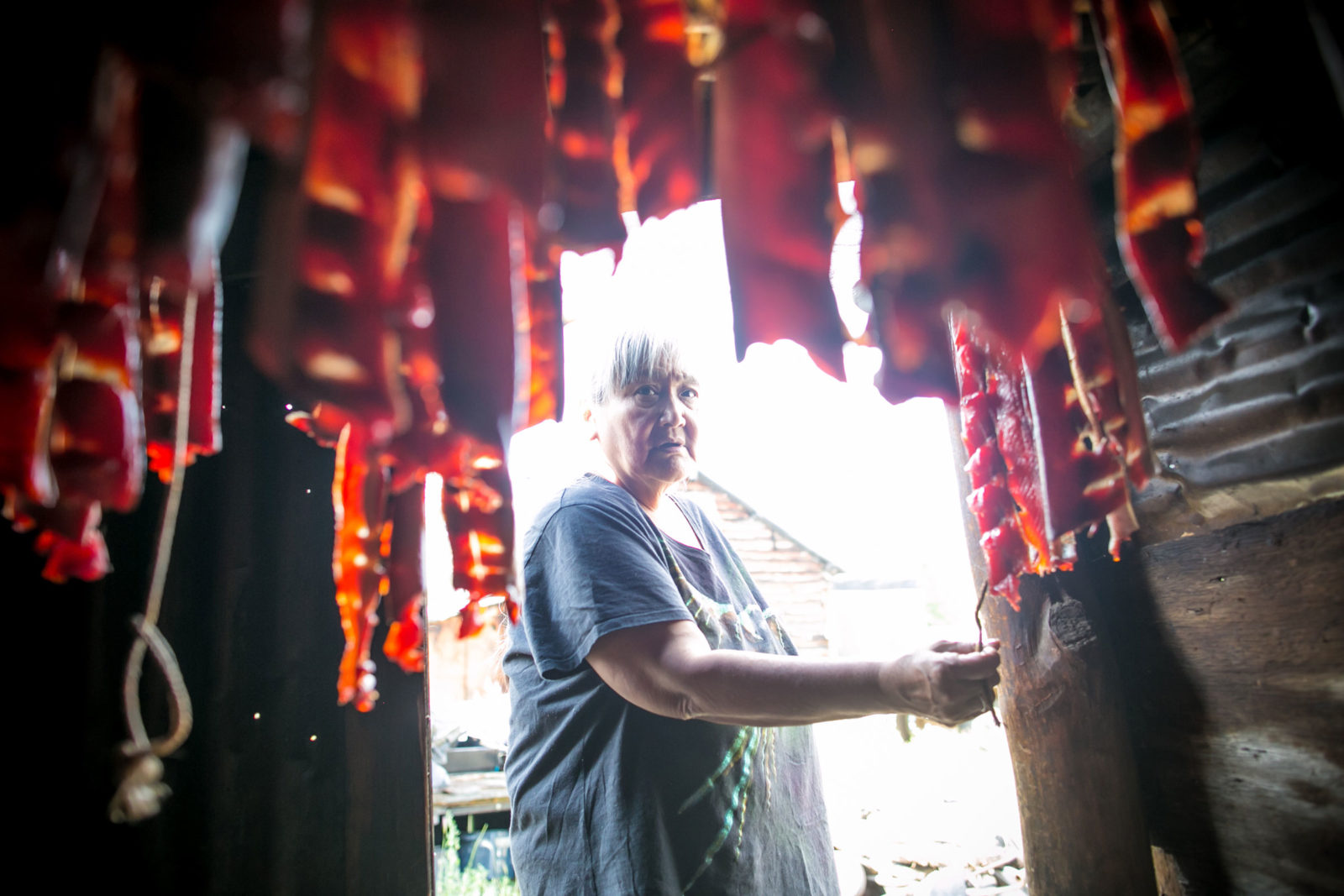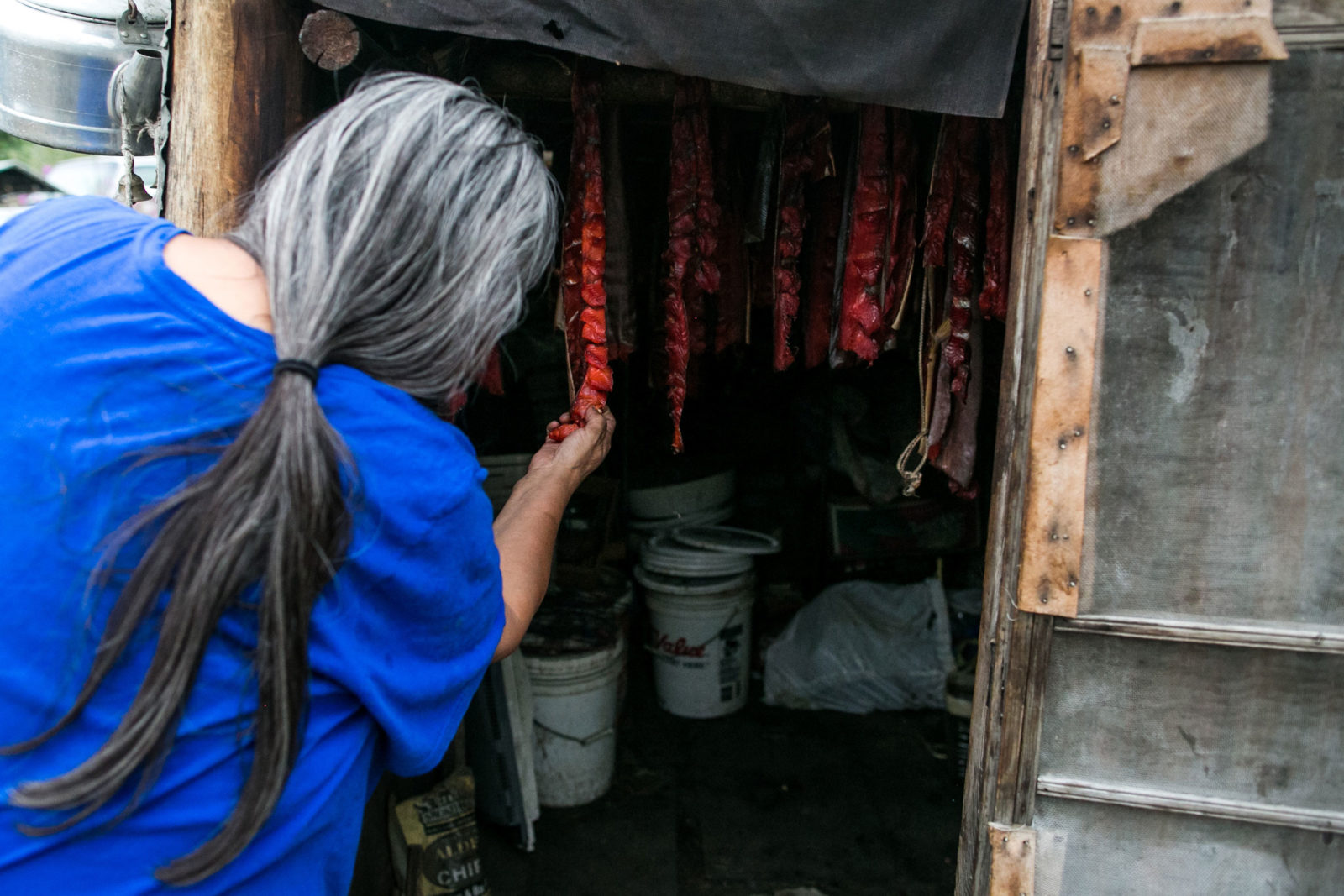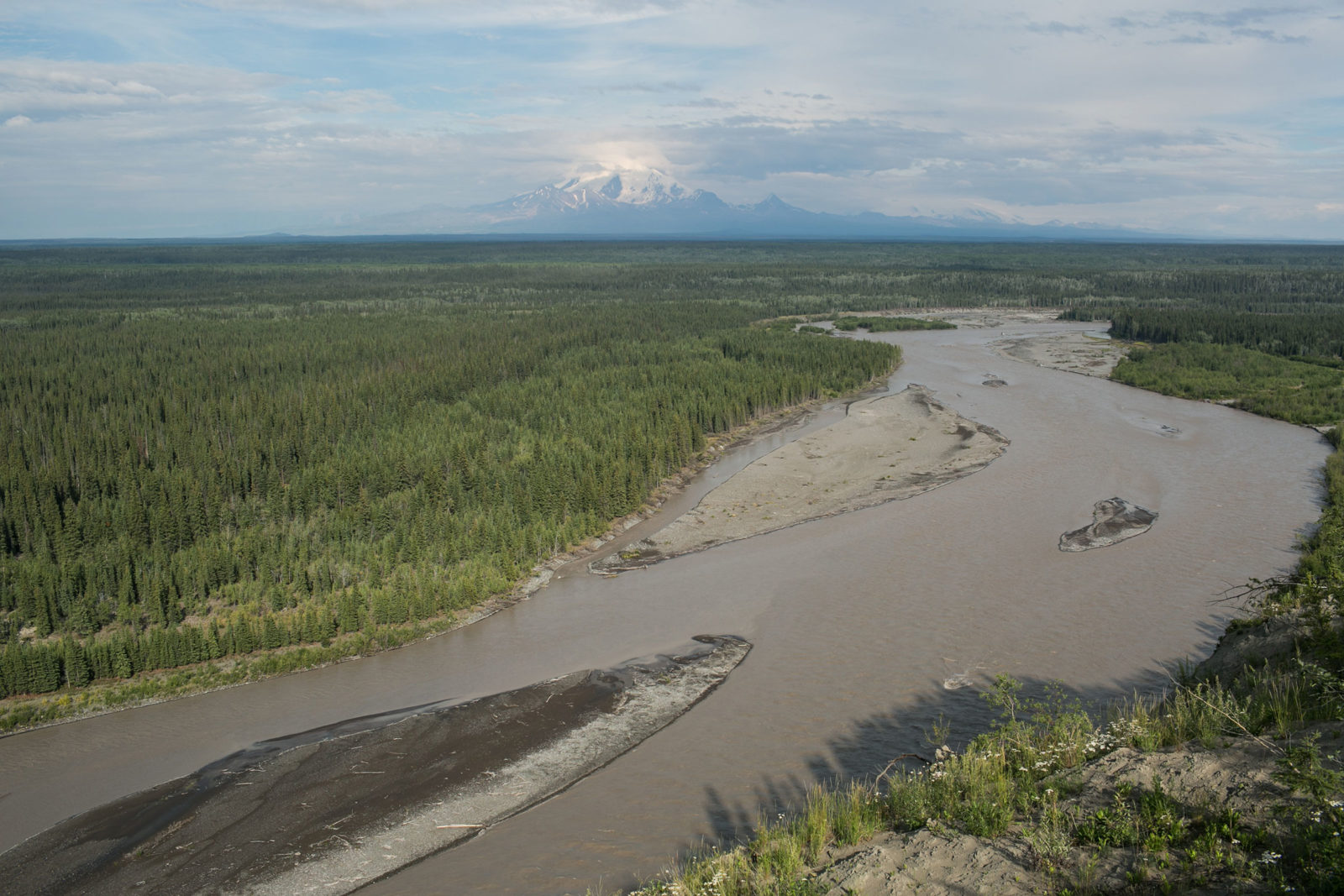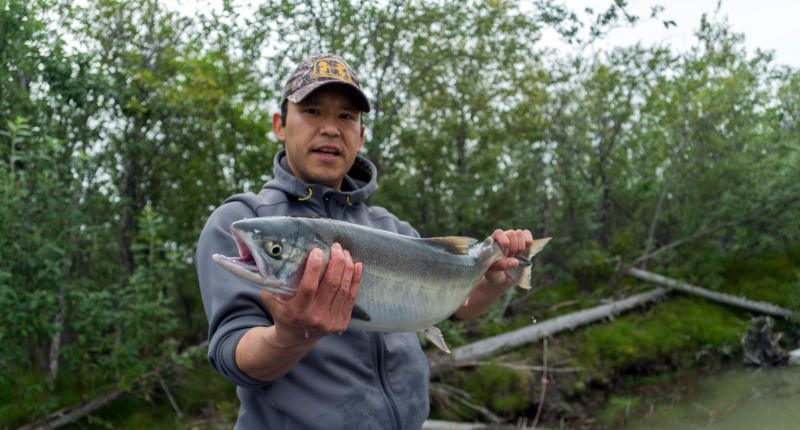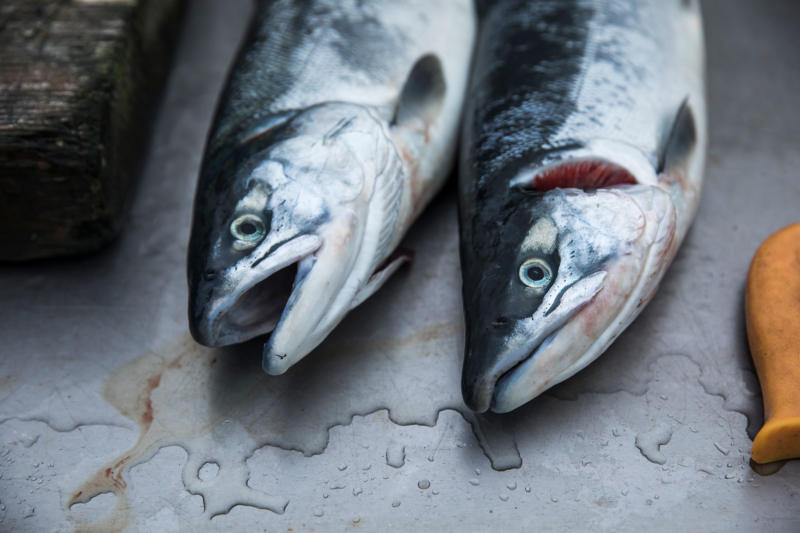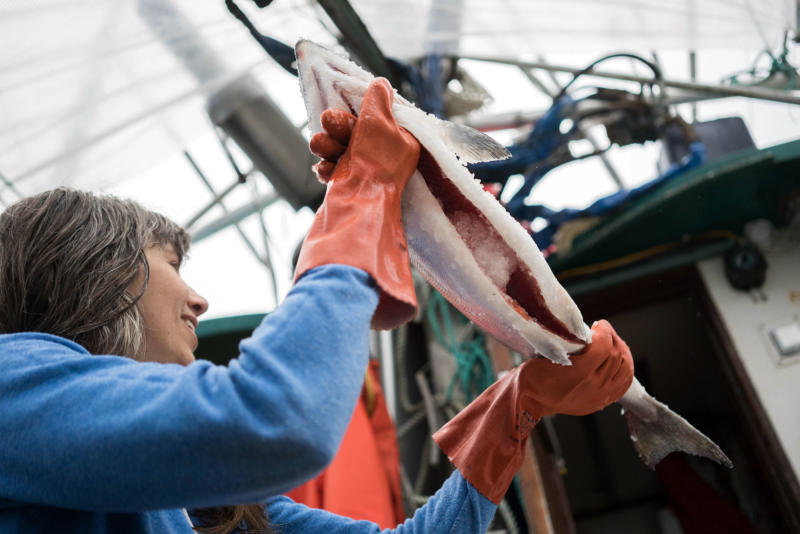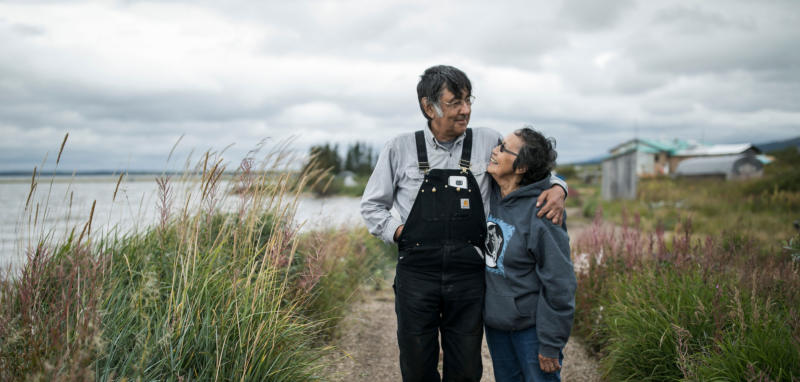Among the largest rivers in Alaska, the Copper sustains healthy runs of sockeye, chinook and coho salmon. The reds are famed for their bright red meat and high oil content. I’ve seen Copper River salmon on the menu in cafés in Washington D.C.
The fish are pulled from the mouth of the river by commercial fishermen, by dip-netters in the canyon upriver in Chitina, from the holding tanks of fish wheels along the middle to upper river, and by sports fishermen at tributaries that feed into the great river.
Of these groups, the Ahtna Athabaskans have been here the longest. That’s what Tursy is doing here and this morning she is telling me about her specialty: smoked salmon oil. “It was made two years ago,” she tells me, “from salmon heads. The longer it sits, the better it tastes,” she explains. “This is my gold!” Together we dip dried salmon into the bronze richness and savor the feeling of a connection to the salmon, of nothing wasted, of a land that provides.
A mother of four and a grandmother, Tursy lives alone not far from the river that characterizes her summer. When she tells me that no one helps her put up all this salmon every season, at first I have to wonder, but as I spend more time with her, I begin to notice that she doesn’t stop moving. Of course she is doing this all herself, her energy knows no limits.
